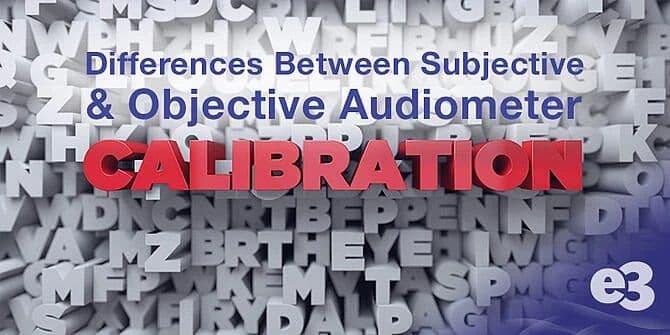Differences Between Subjective & Objective Audiometer Calibration

An audiometer may be the single most important piece of equipment in your practice. To keep it in working order, highly trained and qualified professionals must calibrate this equipment annually. However, the specific method depends on the type of calibration that needs to be conducted.
What Is Audiometry
Before we go any further, let’s cover the basics of audiometry. There are two primary screening methods used to assess auditory health: objective and subjective audiometry.
- Objective audiometry measures electrical activity in the auditory pathway. It does not require a patient to participate.
- Subjective techniques test the patient’s ability to hear words, frequencies or tones at differing volumes. The participant will need to respond to the stimuli for an accurate evaluation.
To ensure proper function, audiometers must comply with the International Electrotechnical Commission (IEC) manufacturing standards. They should also meet the performance and calibration requirements set by ISO and ANSI criteria, defined in the Spanish Audiology Association guide to pure tone hearing tests.
What Is Calibration
Audiometers are designed to generate very precise results. Therefore, they must be calibrated, or reset, to ensure consistent and accurate performance.
There are two types of calibration: subjective and objective.
Subjective Calibration Of Audiometers
Subjective calibration starts with a physical examination of the device components. During this exam, a technician checks for the following:
- Signs of wear or damage
- If tones are heard on the correct side
- If battery charge will accommodate the testing time
- Transducer serial numbers match the audiometer
- There is no audible noise — such as crackles or static — can be heard from the system
Next, a test is performed on a subject with known hearing levels, such as the audiometer operator or an assistant. At least two hearing frequencies between 500-4,000 Hz per ear is recommended. For consistency, the same person should be tested on the same device at regular intervals. If the audiometer is calibrated correctly, all results should be within 10dB.
A biological calibration of an audiometer should be conducted:
- Every day when the audiometer is first activated
- When your patient load exceeds 20 patients in both the morning and afternoon
- If the transducer is dropped
- If you get inconsistent responses or unexpected results
It’s important to keep a historical record of each calibration. Create a fictional patient and use the audiogram as a baseline score. Testing this “person” on a regular basis should produce results within 10dB. If the outcomes vary, you may have an issue with the equipment.
Objective Calibration Of Audiometers
Objective calibration can be conducted less frequently, though it should be done at least once a year.
Schedule objective calibration if:
- Patient load exceeds 100 patients per month
- You change transducers
- You notice a difference greater than 20dB among three successive subjective calibrations
Typically, sound engineers and audiometric technicians perform this type of calibration since it requires specialized toolsincluding: - An SPL meter with octave filter set
- An artificial ear with condenser microphone
- An artificial mastoid
- Bruel & Kjaer equipment
If you need assistance conducting an objective calibration or if your biological calibration indicates there is an issue with your equipment, your local e3 office. Our technicians are NASED certified and can calibrate virtually any type of audiometric equipment. Reach out today!
